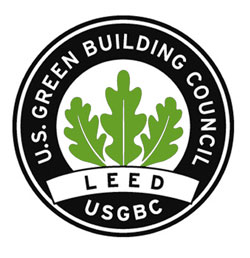LEED CERTIFICATION PROGRAM
LEED (Leadership in Energy and Environmental Design) is the most widely used green building rating system in the world. Available for virtually all building types, LEED provides a framework for healthy, highly efficient, and cost-saving green buildings. LEED certification is a globally recognized symbol of sustainability achievement and leadership.

Why LEED?
- Ensures that all building stakeholders - developer, property manager, occupant and the community benefit from sustainable design, co-operations and performance.
- Supports projects to implement sustainable and healthy building practices to realize environmental, economic, social and community benefits for decades to come.
- Emphasizes integrative design to ensure better design, translation of design into high quality construction, optimize operations and high performance of a building.
- Helps buildings deliver higher quality beyond market practices by incorporating innovative design, technologies, construction and material selection strategies.
- Focuses on both performance oriented sustainable strategies and outcomes.
- Helps buildings consume fewer resources, reduce operating costs, increase value and create safer and healthier environments for its occupants.
- Prioritizes sustainable materials, helping manufacturers to design, produce and deliver building materials that reduce a building's environmental impact.
- LEED v4.1 also helps manufacturers reduce energy, water, waste during manufacturing, carbon footprint during distribution and transportation and overall carbon emissions through the entire production lifecycle.
